MTH251 Calculus 1
Differential Calculus
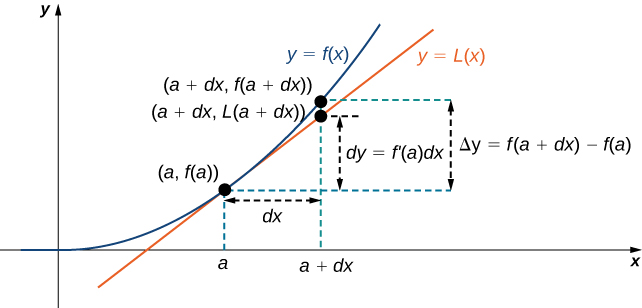
Chapter 2
§ 2.1 A Preview of Calculus
Learning Outcomes
- Describe the tangent problem and how it led to the idea of a derivative.
- Explain how the idea of a limit is involved in solving the tangent problem.
- Recognize a tangent to a curve at a point as the limit of secant lines.
- Identify instantaneous velocity as the limit of average velocity over a small time interval.
- Describe the area problem and how it was solved by the integral.
- Explain how the idea of a limit is involved in solving the area problem.
- Recognize how the ideas of limit, derivative, and integral led to the studies of infinite series and multivariable calculus.
The Tangent Line Problem
How do we find the slope of a curve at a point when we need two points to find a slope?
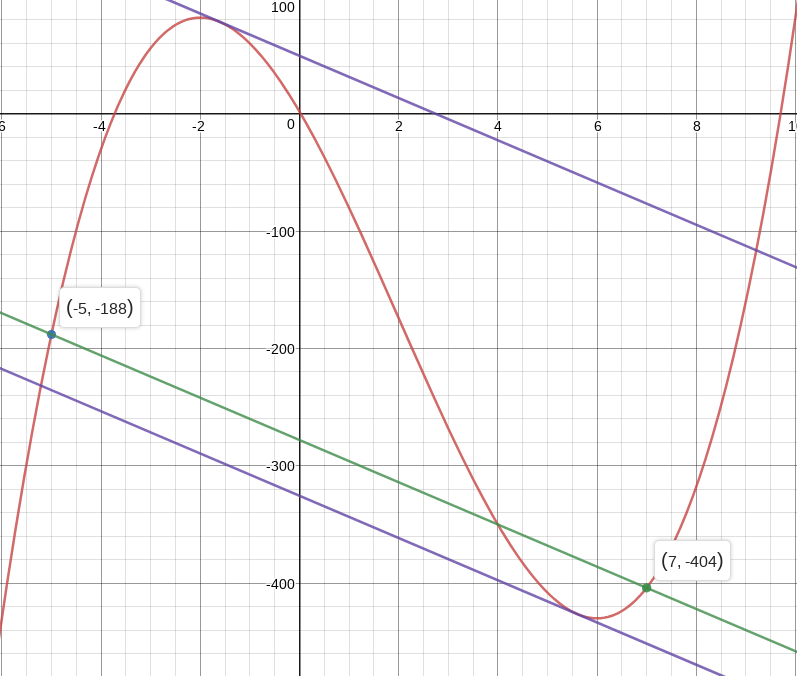
Geogebra Secant Example
Geogebra Spreadsheet Example
The Area Problem
Consider the image below:
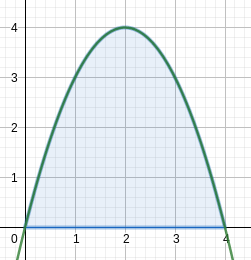
Positive area under a curve.
How do we find such an area?
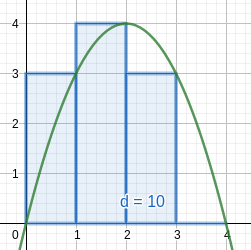
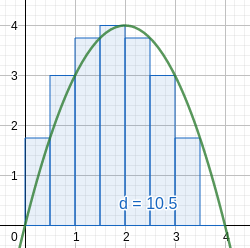
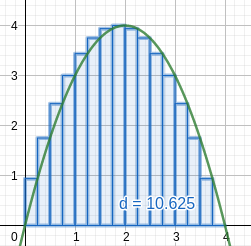
Rectangles are easy to work with.
§ 2.2 The Limit of a Function
Text for Section 2.2 The Limit of a Function
Learning Outcomes
- Using correct notation, describe the limit of a function.
- Use a table of values to estimate the limit of a function or to identify when the limit does not exist.
- Use a graph to estimate the limit of a function or to identify when the limit does not exist.
- Define one-sided limits and provide examples.
- Explain the relationship between one-sided and two-sided limits.
- Using correct notation, describe an infinite limit.
- Define a vertical asymptote.
Intuitive Definition of a Limit
`lim_{x to a} f(x)=L`
The limit of `f(x)` as `x` approaches `a` is `L` if for all values of `x` close to `a`, `f(x)` is close to `L`.
This is a tough problem that takes time to figure out. What does "close to" mean? How do we measure
this closeness?
Examples:
- `lim_{x to 3} 2x-1 = 5`
- `lim_{x to -2} x^2+2x-1 = -1`
- `lim_{x to 0} sin(x)/x = 1`
use spreadsheet to show numerically - `lim_{x to 2} (x^2-4)/(x-2)=4`
Left
x
y=(x^2-4)/(x-2)
dx
2
Target
1
1
3
0.1
1.9
3.9
0.01
1.99
3.99
0.001
1.999
3.999
0.0001
1.9999
3.9999
0.00001
1.99999
3.99999
0.000001
1.999999
3.999999
- `lim_{x to 0} (1+x)^(3/x)=20.08553692...?`
- `lim_{x to a} C = C`
- `lim_{x to a} x = a`
The Existence of a Limit
A limit exists of it results in a real number.
There are many ways that a limit will not exist.
- The left an right sides don't match.
- There is no fixed result.
- Infinity is involved.
One Sided Limits
Limit from the left side: `lim_{x to a^-} f(x)
Limit from the right side: `lim_{x to a^+} f(x)
Consider the slopes of the absolute value function.
The two-sided limit exists only of the left and right limits exist and are equal.
Infinite Limits
Left, right, and two sided
Any limit resulting in infinity Does Not Exist!
Limits to infinity, `lim_{x to oo} x^2 = oo` or `lim_{x to oo} 1/x = 0` describe end behaviour of functions.
Holes and asyptotes
- `lim_{x to 6} (x-6)/(x^2-36)`
- `lim_{x to oo} 1/(x-2)`
- `lim_{x to 2^-} 1/(x-2)`
- `lim_{x to 2^+} 1/(x-2)`
- `lim_{x to -oo} e^x`
- `lim_{x to oo} sin(x)`
§ 2.3 Limit Laws
Text for Section 2.3 The Limit Laws
Learning Outcomes
- Recognize the basic limit laws.
- Use the limit laws to evaluate the limit of a function.
- Evaluate the limit of a function by factoring.
- Use the limit laws to evaluate the limit of a polynomial or rational function.
- Evaluate the limit of a function by factoring or by using conjugates.
- Evaluate the limit of a function by using the squeeze theorem.
The basics
- `lim_{x to a} C = C`
- `lim_{x to a} x = a`
The Laws
Assumptions: `f(x)` and `g(x)` are defined for an interval of numbers containing `x=a`, but maybe not at `a`. Each function has a limit at `x=a`. `lim_{x to a} f(x)=L` and `lim_{x to a} g(x)=M`.
- `lim_{x to a}c*f(x)=c*lim_{x to a}f(x)=cL`
- `lim_{x to a}(f(x)+-g(x))=lim_{x to a}f(x)+-lim_{x to a}g(x)=L+-M`
- `lim_{x to a}(f(x)*g(x))=lim_{x to a}f(x)*lim_{x to a}g(x)=L*M`
- `lim_{x to a}(f(x)/g(x))=(lim_{x to a}f(x))/(lim_{x to a}g(x))=L/M`
- `lim_{x to a}(f(x))^n=(lim_{x to a}f(x))^n=L^n`
- `lim_{x to a}root(n){f(x)}=root(n){lim_{x to a}f(x)}=root(n){L}`
NOTE: It is very important that these laws only apply if each function actually has a limit. Limits of infinity do NOT exist.
Examples
Consider one-sided limits like `lim_{x to 2^-)sqrt(x-2)`
Consider piece-wise functions with two-sided limits.
The Squeeze Theorem
`lim_{x to 0}sin(x)/x`
Other examples
`lim_{theta to pi} sin(theta)/tan(theta)`
§ 2.4 Continuity
Text for Section 2.4 Continuity
Learning Objectives
- Explain the three conditions for continuity at a point.
- Describe three kinds of discontinuities.
- Define continuity on an interval.
- State the theorem for limits of composite functions.
- Provide an example of the intermediate value theorem.
Continuity at a point
A function f(x) is continuous at a point a if and only if the following three conditions are satisfied:
- `f(a)` is defined.
- `lim_{x to a} f(x)` exists.
- `lim_{x to a} f(x)=f(a)`
Types of discontinuities
- Removable
- Jump
- Infinite
Continuity over an interval
A function `f(x)` is continuous over an open interval `(a, b)` if it is continuous at each point in the interval.
A function f(x) is said to be continuous from the right at a if `lim_{x to a^+}f(x)=f(a)`.
A function f(x) is said to be continuous from the left at a if `lim_{x to a^-}f(x)=f(a)`.
The intermediate value theorem
Let f be continuous over a closed, bounded interval [a,b]. If z is any real number between f(a) and f(b), then there is a number c in [a,b] satisfying f(c)=z.